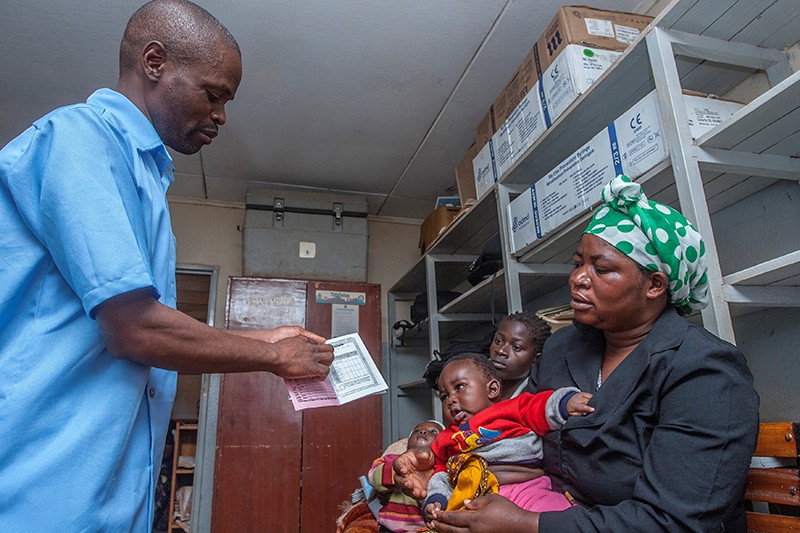
When health workers in Malawi began rolling out the first vaccine proven to protect against malaria, it was a moment 32 years — and more than US$700 million — in the making.
The country began giving the vaccine, called RTS,S, to children under age two on 23 April. Soon Ghana and Kenya will join in, as part of a large-scale pilot programme backed by the World Health Organization (WHO). The effort could immunize more than one million children by 2023 — a welcome boost in the fight against malaria, which kills an average of 1,200 people worldwide per day. The vast majority are children in Africa.
“We are excited and support this vaccine since there is nothing else,” says Michael Kayange, a programme manager at Malawi’s National Malaria Control Programme in Lilongwe.
But the plan is not without controversy. The RTS,S vaccine only prevents in 4 in 10 malaria cases, and must be given as 4 injections over 18 months. Some malaria researchers question the wisdom of spending time and money on the pilot programme, given that a handful of more effective vaccines are in clinical trials and could be available by the time RTS,S is ready for regular use. They say that the decades-long effort to roll out RTS,S exemplifies the plodding progress on vaccines for diseases that affect the world’s poor, and highlights the need for a more efficient path forwards.
“We need to rethink this whole process,” says James Tibenderana, global technical director at the Malaria Consortium in London. “We can’t expect pharma to spend another 30 years making a vaccine that will then be piloted for 3–4 years before people make their mind up about that result.”
Officials at GlaxoSmithKline (GSK), the London-based pharmaceutical firm that manufactures the vaccine, agree. “We are incredibly proud to see it rolled out,” says Thomas Breuer, the company’s chief medical officer for vaccines. But, he adds, “This kind of endeavour can’t be repeated, from GSK’s point of view — we have to find other ways.”
A bumpy road
When scientists at the Walter Reed Army Institute of Research in Silver Spring, Maryland, began testing the RTS,S vaccine in 1987, they quickly recognized how hard it would be to target the malaria parasite. Unlike viruses or bacteria, Plasmodium falciparum changes shape in the human body, which makes it hard for attacking proteins triggered by the vaccine to recognize the parasite.
Over the next three decades, GSK and the Bill & Melinda Gates Foundation in Seattle, Washington, supported development of the vaccine — at a cost of $700 million. The effort culminated in 2015, when a 15,000-person clinical trial found that giving four doses of RTS,S over 18 months cut the number of malaria episodes that young children experienced by 36%1.
But data from an earlier trial suggest that that the partial protection fades over several years2. And a deep dive into data from the 2015 trial revealed that girls who had received the RTS,S vaccine were slightly more likely than those who weren’t vaccinated to die from all causes — including severe malaria3. At the same time, Tibenderana says, officials at malaria-control agencies in Africa worried about how to afford a multi-dose vaccine when they already struggle to deploy bed nets and drugs to treat infection.
Mindful of such concerns, the World Health Organization recommended in 2015 that the RTS,S vaccine be rolled out in phases, to identify any safety issues and to determine the feasibility of wider distribution. In 2016, three non-profit health groups — the Global Fund to Fight AIDS, Tuberculosis and Malaria, the vaccine alliance Gavi, and Unitaid — agreed to fund a pilot programme for four years, at a cost of $52 million.
Wait and see
Mary Hamel, a medical epidemiologist at the WHO in Geneva, Switzerland, says that researchers will compare the health of vaccinated children in Malawi, Ghana and Kenya with that of unvaccinated kids in neighbouring regions. “We will be watching for imbalances in deaths, severe malaria and meningitis,” she says. The WHO’s models suggest that one life will be saved for every 200 children who are immunized.
That means the pilot could save thousands of people. But Sabra Klein, a public-health researcher at Johns Hopkins University in Baltimore, Maryland, worries that the cause of anysafety issues that arise during the roll-out will be hard to identify, because the pilot is not a controlled trial. “We need to address this to improve the science behind our vaccines,” she says.
Others, such as Adrian Hill, a vaccine researcher at the Jenner Institute in Oxford, UK, argue that the money for the pilot programme could be better spent on supporting the development of more effective vaccines; Hill is helping to develop a malaria vaccine called R21 that is set to begin Phase II trials in Burkina Faso later this year. And some scientists want to re-engineer RTS,S to better defend against the most common strains of malaria parasite in Africa4.
“Someone needs to take a hard look at how money is being spent,” Hill says. “There isn’t a very independent entity that can ask if, in the current environment, it’s worth putting another $52 million into a vaccine designed in 1987.”




Comments
Post a Comment